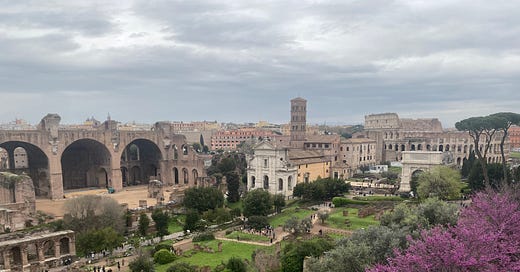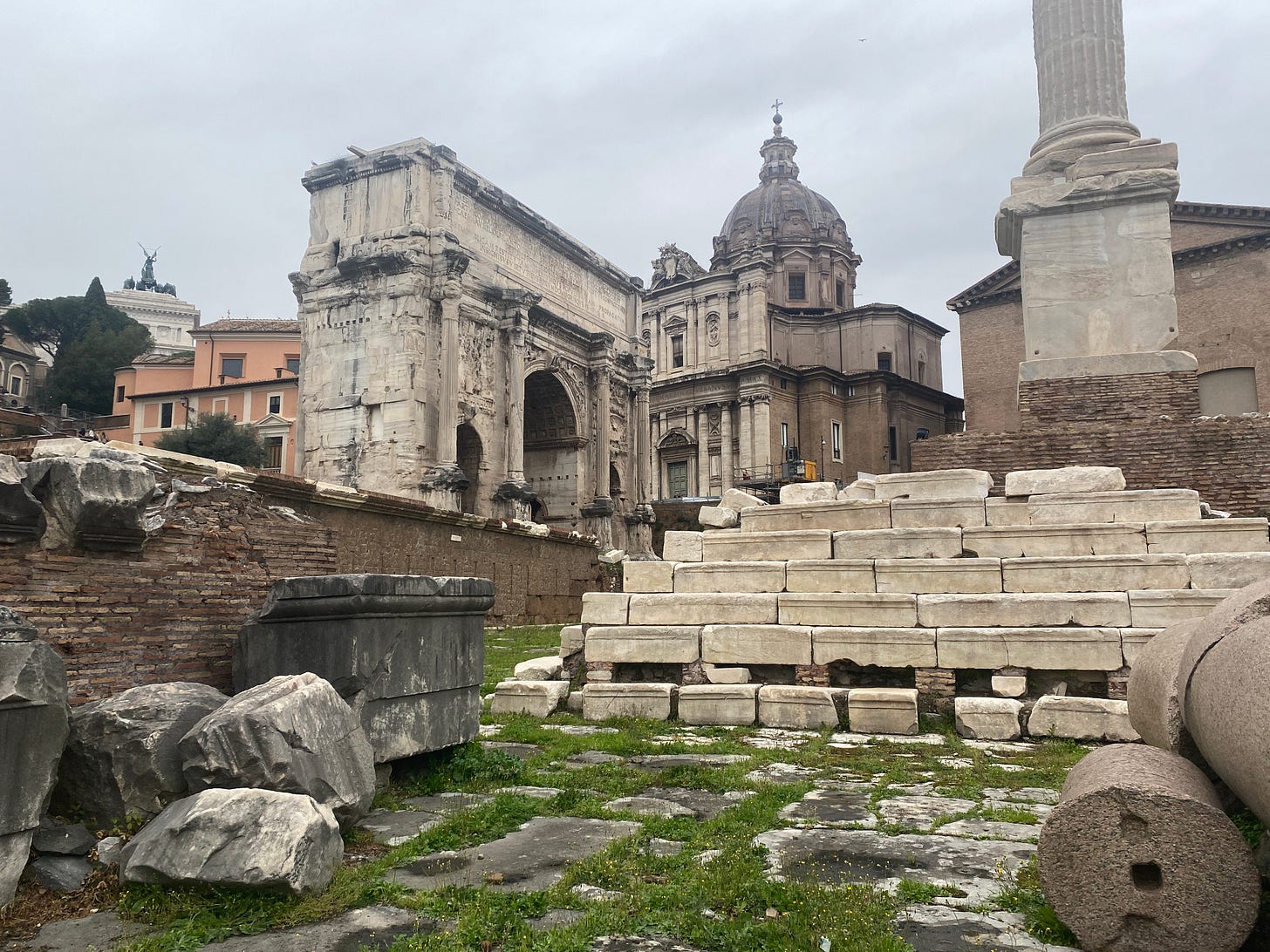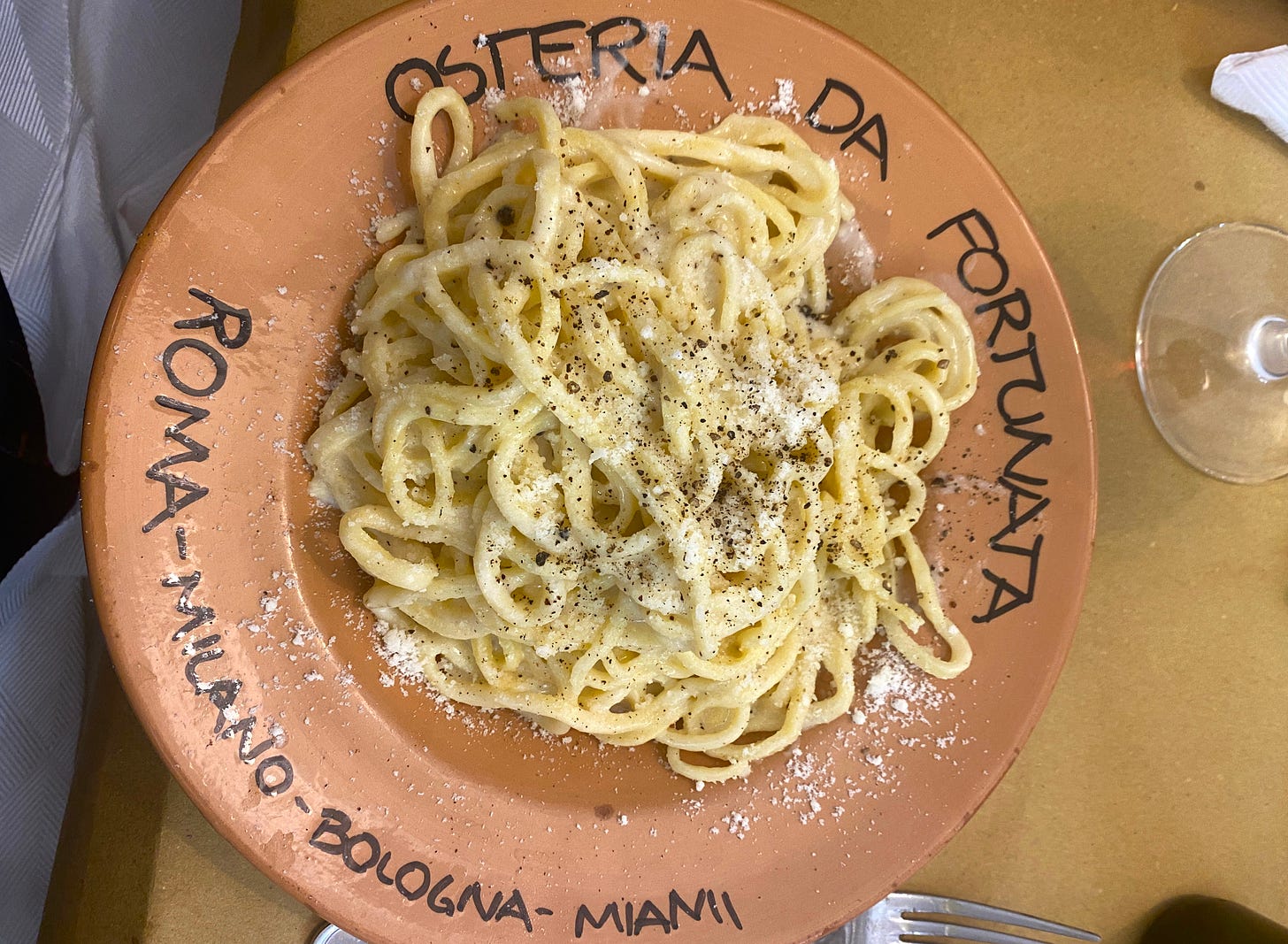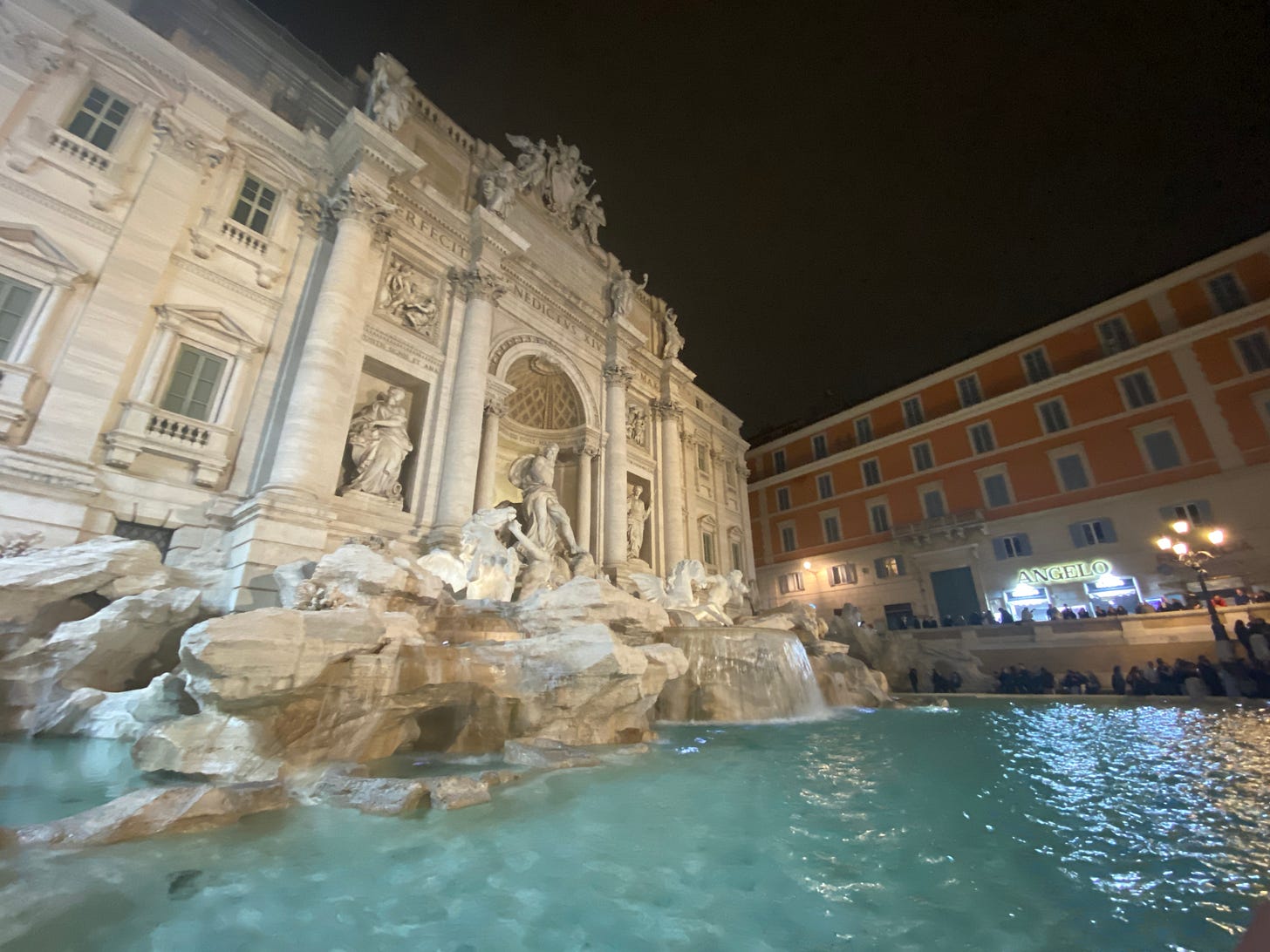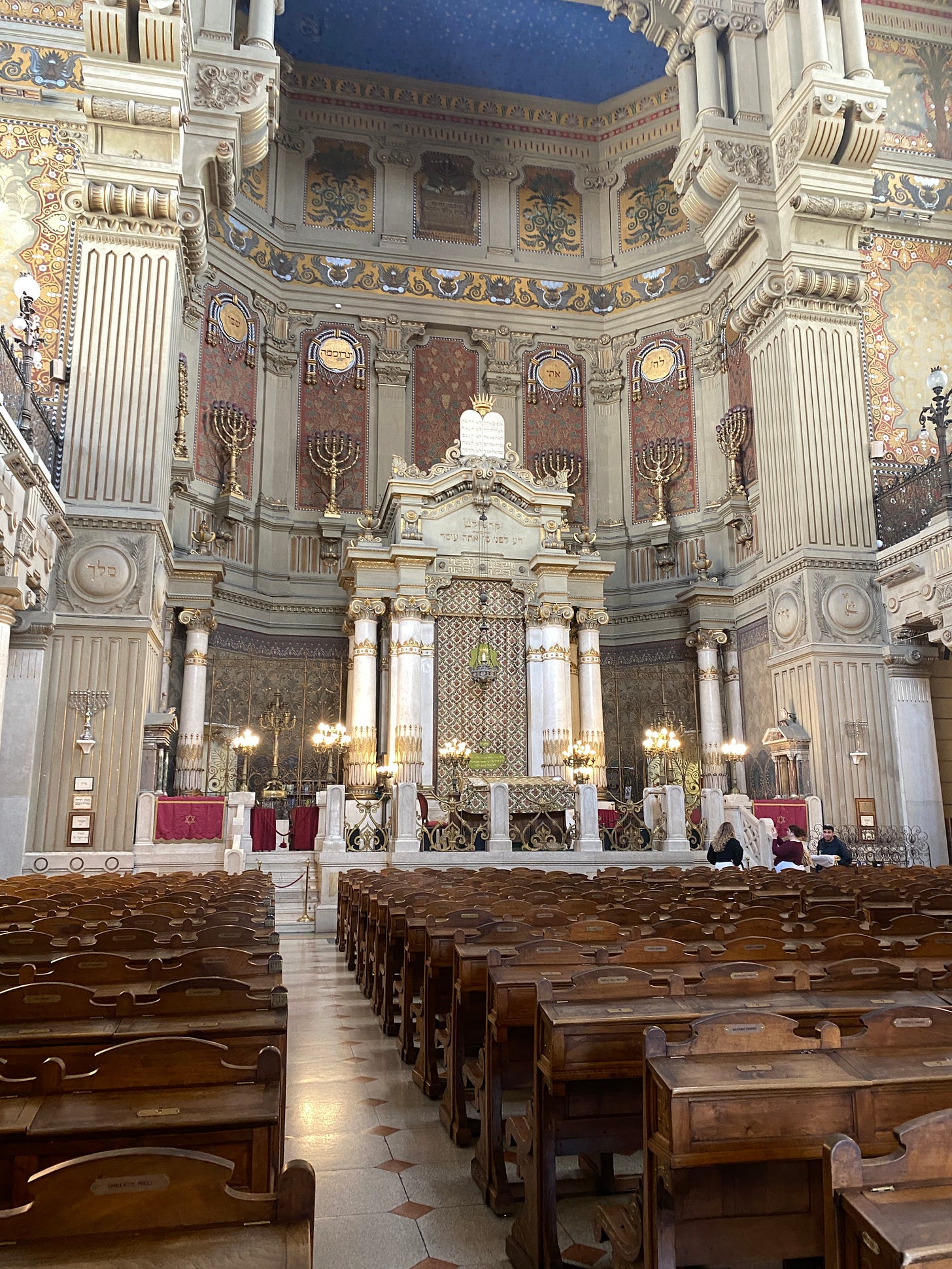Everything a city like Paris means to the world is what Rome means to me. Historic. Inspiring. Romantic. Brimming with some of the best food that will ever enter your face-hole.
It’s, simply put, stupendous.
I first came to Rome about eight years ago. It was the first place Melanie and I traveled to outside of Germany after moving overseas to Düsseldorf. Paris never tickled my imagination in the same way as Rome, so heading to the ancient Italian capital felt like a natural first trip out of Germany.
Folks from my side of the world will save money throughout their entire working careers and wait until summer vacation or when kids graduate for the chance to walk among the cobblestones of Ancient Rome. Yet there I was, just hopping on a quick flight to see it for myself over a long weekend.
I felt at the time, in the words of Wayne and Garth, not worthy.
Eight years was long overdue for a return visit. And I’m a bit ashamed to admit that it wasn’t my idea to come back. I’m in a Jewish group in Berlin and the idea was tossed around to travel to Rome. We could learn about the unique, ancient Jewish community that continues to thrive in the old ghetto while overlooking that little commandment about gluttony, stuffing our faces with pasta, seasonal artichokes, and tiramisu until we collapsed in our respective beds.
I arrived from Florence on Wednesday afternoon, just a 90-minute or so high-speed train ride after spending four days running the Via degli Dei from Bologna (video and article on that little adventure to come). From Roma Termini, I boarded a bus to start the winding drive out of the city center to Trastevere––literally “over the Tiber River.” It was one of the neighborhoods that struck me during my first visit and it was our base this time around.
Melanie and everyone else had yet to arrive except Andrés, who used to live in Rome and was returning himself for the first time in a decade. I grabbed some Roman-style pizza––thicker and crunchier, served with two slices sandwiched together––and we wandered around Trastevere, the Jewish ghetto, and a bit of the historic city center until the sun set and the rest of our group could join us for a 9 p.m. Roman dinner.
Tripping over a large, uneven, and raised cobblestone, I was quickly reminded that Rome is a bit like walking around a ship. You need your sea legs, they say. In Rome, you need your Roman legs to get used to the ancient and medieval streets that locals, rightly in my opinion, refuse to pave over. You will stub your toe, you will trip, and if you’re lucky, you’ll fall into the nearest ristorante for some homemade pasta and a glass of the house wine.
Rome evolves slowly because of the importance placed upon its history. Dig anywhere in the ground and you’re bound to find some priceless piece of ancient history. That’s why so many of the city’s modern buildings (and by modern, I mean within the past few hundred years) are built attached to or around Rome’s ancient bones. It’s one of the city’s many layers that make it unique when compared to the world’s other great global capitals.
In Rome, I’ve learned to say ‘yes’ to just about anything. Want to go to the Colosseum? Sure. Want a glass of wine? Sounds good. Want to wander around aimlessly, hopping into different supplì and gelato shops along the way? Absolutely.
Yes, some of it would fall under the much-maligned umbrella of ‘touristy’ and thus scoffed at by the denizens of too-cool-for-school travelers who only want to travel how they think someone like Bourdain did. But there’s something special about being surrounded by people who’ve traveled from all over the world just to experience Rome in all its ancient and modern glory.
Last night, we all sat at Trevi Fountain––a place I was too cool to visit last time because I knew it’d be full of tourists. My superstitious tendencies started to kick in, so I threw a coin with my right hand over my left shoulder into the fountain to ensure my return, someday, to Rome as local tradition dictates. And we watched as travelers took selfies and group photos.
For a moment, everyone was in their own little world with friends and loved ones at their side. Nobody was crying or in the throws of a world affairs-induced anxiety attack. People were smiling, hugging, and kissing one another.
It was heart warming. It was beautiful. It was Rome.
Breakfast: Italian breakfast is a pastry and ‘un caffè’ (espresso). Rome is no different. You can get it just about anywhere.
Lunch: Sora Margherita in the ghetto. It’s the kind of place you squeeze into to get to your seat. Pasta is homemade and it’s home to the best carciofi alla giudia (Jewish-style articokes) we had on the trip.
Snack: Supplì Roma. You can get just about anything in this deliciously fried morsel of heavenly goodness. I twice got the cacio e pepe. But really, I doubt you can go wrong. Just don’t be intimidated by the “soup Nazi” vibe. You won’t be yelled at if you don’t know what you want as soon as you get to the counter, but there is a menu on the wall and I do advise you order quickly. Just a feeling.
Dinner: We didn’t have a bad meal in town. But I might have to give the nudge to Osteria da Fortunata - Pantheon for dinner. I was highly skeptical at first. Usually restaurants right near a tourist attraction are, quite frankly, garbage. This was not that. This was phenomenal. (The cacio e pepe above is from this restaurant.)
Treat: Gelateria La Romana has a handful of locations around town. I went to the one on the edge of the ghetto at Piazza di Sant Andrea della Valle twice. Again, I doubt you can go wrong. But two of my orders consisted of the Croccante all'Amarena––a delicious combination of cherry ice cream and satisfyingly crunchy hazelnut brittle.
See: All the stuff you’d see without me telling you to, but do add the synagogue to your list. Churches are a dime a dozen in Rome and Europe at large. Because of history, it’s rare to find a large, magnificent synagogue the likes of which you can find in Rome.

